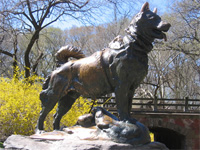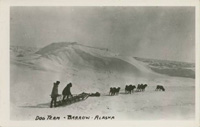So you Want to try dog sledding?
What is dog sledding?
Do you want to experience the Northern Lights, Mountains, Forests and nature in a different way? Do you want to be close to nature with days away in the wilderness?
If rushing through the snow at close to 30 miles an hour pulled by your own team of sled dogs sounds like fun then maybe you should try dog sledding.
a bit of history

Indigenous people of the far North regions were dependent on sled dogs for protection, companionship, hunting, trapping, and transportation for thousands of years. In the more recent European immigrations to North America, newcomers quickly saw the value of working sled dogs. The Royal Canadian Mounted Police started running dog-team patrols in the northern frontiers as early as 1873. Mail teams later delivered the news to outlying communities. Inland settlements were dependent on sled dog freight haulers. Explorers such as Byrd, Peary, and Amundsen relied on sled dogs in their exploration of frozen wastelands.
The first record of a formal sled dog race dates back to 1908. The running of the All Alaska Sweepstakes began with established rules and a racecourse of 408 miles from Nome to Candle and back. The winning driver made the trip in 119 hours, 15 minutes, and 12 seconds. In just a few years, the number of musher entries to the All Alaska race increased considerably as well as the speed of the teams. The winner of the 1910 race completed the course in 74 hours, 14 minutes, and 37 seconds, a record that still remains unbroken.
A diversion from often difficult living and working conditions, sled dog racing spread rapidly throughout Canada and the United States. However by the 1920's, sled dog team use for daily transportation, freight hauling, and mail delivery needs in the northern regions began to be replaced by airplanes.

Sled dog history was made in 1925. In January of that year, an outbreak of diphtheria occurred in the small icebound village of Nome, Alaska. The native population there had little or no immunity and the city's supply of antitoxin was inadequate to stave off a near-certain fatal epidemic. Serum was available from Anchorage; however, it needed to be moved over 670 miles across the rough ice and water of the Iditarod trail. A twenty-pound pack of diphtheria serum wrapped in quilting, canvas, and then fur first traveled by railroad from Anchorage to Nenana. From there, a relay natives and mail carriers and their sled dog teams was quickly recruited and organized. The drive was a success, the serum was delivered in less than five and a half days.
Today, few of the inhabitants of the Far North are dependent on dogs for basic survival. However, sled dog racing continues in the United States, Canada, Northern Europe, the United Kingdom, Japan, and other locations around the world.


